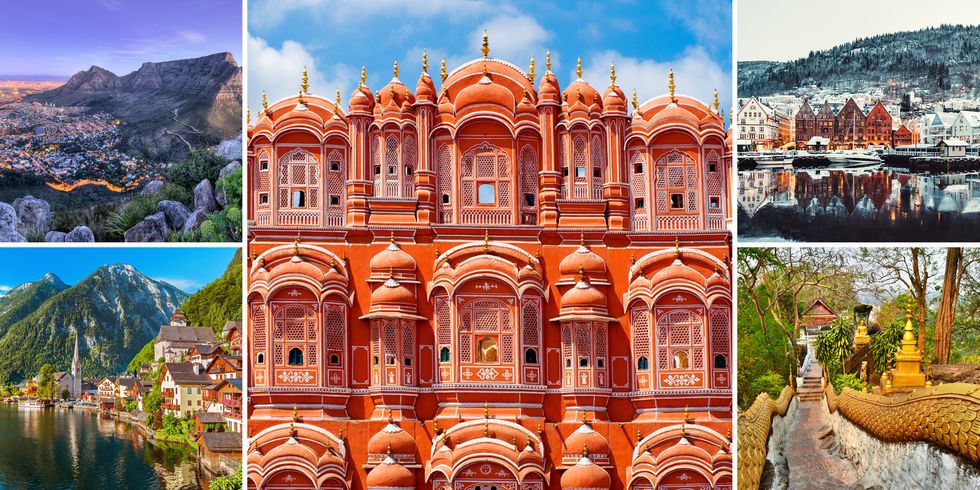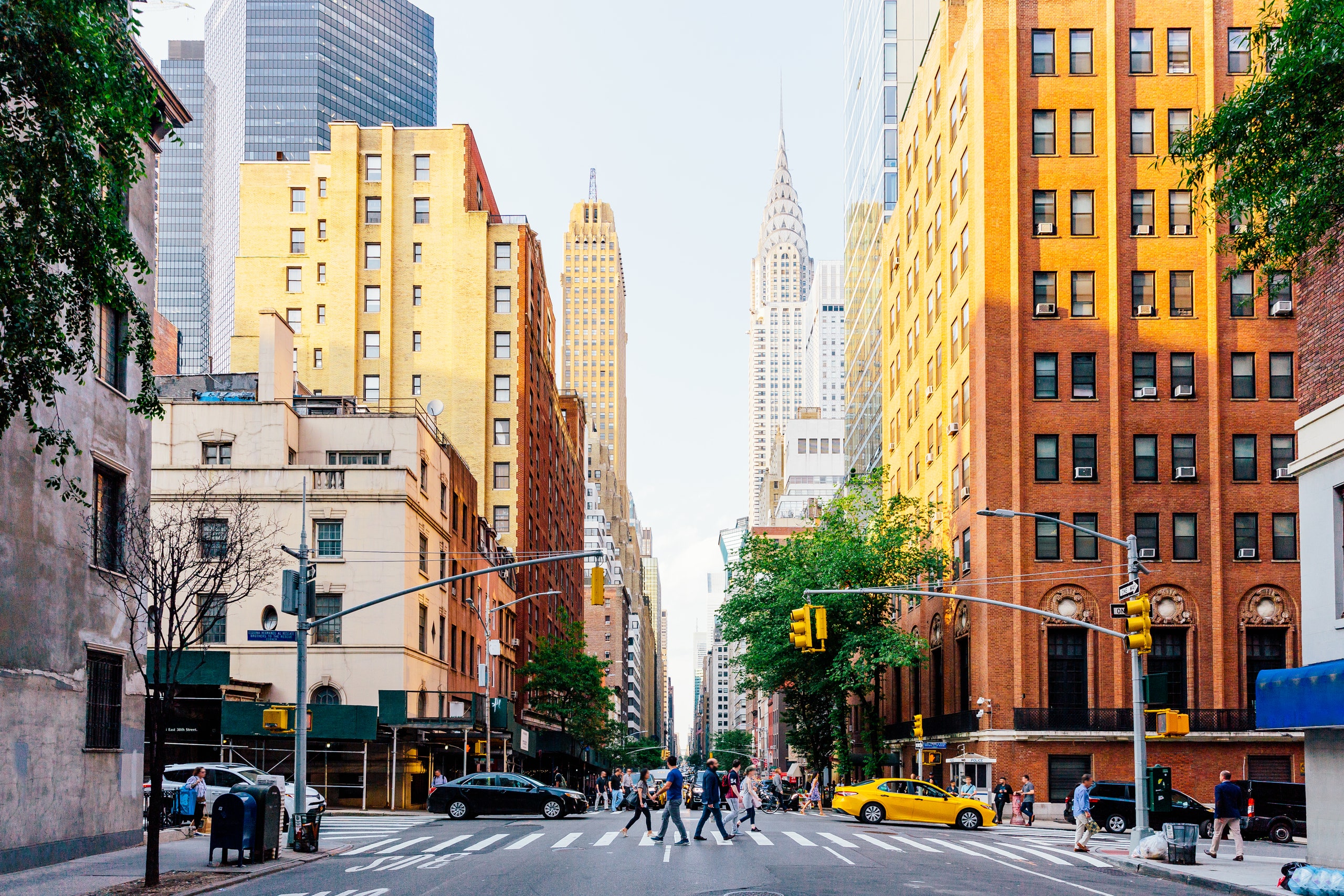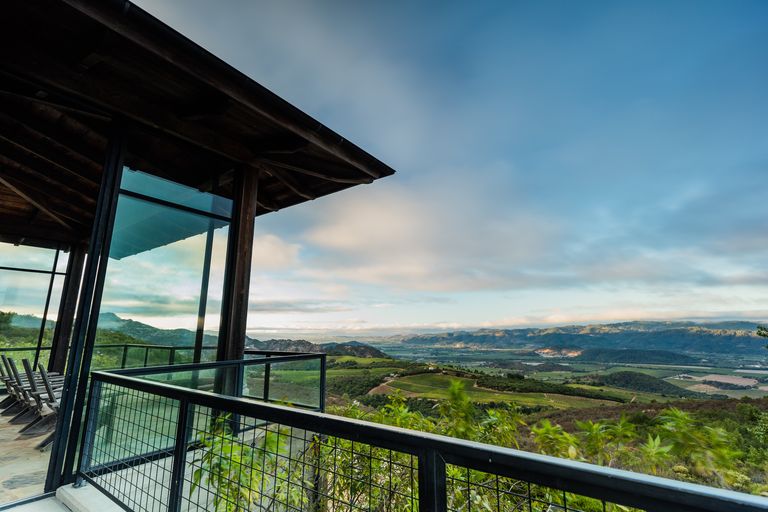The world is home to some 4,416 cities – from the crumbling grandeur of Rome to the bristling, ultra-modern towers of Shanghai. It includes tiny Adamstown, a microscopic settlement in the Pitcairn Islands with a population of only 48; it includes Venice, a floating city laced by idyllic canals and breathtaking palazzos. And like the people who inhabit them, each has its own distinctive personality, allure, photo-worthy moments, and reasons to pay them a visit. Here, in our humble opinion, are the world’s most beautiful cities.
1) Florence, Italy

While Rome may get the credit for being Italy’s most historic city, Florence holds the flame for sheer, unadulterated Italian beauty. A walk down any cobblestone street will reveal astonishing piazzas and cathedrals—and the skyline dominating the cathedral of Santa Maria del Fiore is a cannot-miss. Also a must-see? The museums and galleries packed to the rafters with some of the world’s most exquisite, and enduring, art; not least Michelangelo’s iconic David, poised beneath a specially designed portal to the heavens themselves.
2) St. Petersburg, Russia

Before there was St. Petersburg—Russia’s own “Paris of the East”—there was an area of uninhabited swampland. From these humble foundations, Peter the Great, tsar until 1728, raised a Russian city to rival the Baroque and Renaissance fortresses of Europe’s West, drawing heavily on the regality of Paris. It is remarkable for its many discreet islands, for the pulsing artery of Nevsky Prospekt, and for the gilded, imperial towers of the Hermitage, a museum containing so many works of art you could spend a life walking its halls and still never glimpse all of them.
3) Charleston, South Carolina

Poised on the Atlantic coast of South Carolina, Charleston possesses a near magnetic allure for its residents and the myriad visitors who make their way to this dazzling, colonial city each year. Despite the boulevards of The Battery (a street lined with grandly charming houses) and the Bermudian limestone and cobbles of Chalmers Street, this city—founded way back in 1670—is no ossified relic. Rather, it is home to a glamorous and burgeoning creative set who have fueled its proliferation of buzzy bars, award-winning, nouveau southern cuisine, world-class distilleries, and stylish hotels.
4) Cape Town, South Africa

For those who live in London and New York, it is easy to become accustomed to the idea of a ‘city’ as a place of sprawling development, where nature can seem very far away. Cape Town tells a different story: shadowed by the magnificent beauty of Table Mountain and its penguin-thronged beaches, the great outdoors are a vital part of daily life in this buzzing, energetic city. From the green lungs of the Kirstenbosch botanical gardens to the electrifying nightlife along the V&A Waterfront, Cape Town is one of the most dramatic and exciting urban locations in the world. And in 2014, it was tapped as a World Design Capital, demonstrating its conscientious blend of natural beauty and human creativity.
5) Bruges, Belgium

This former seaport in Western Flanders remains a waterborne city to this day, despite the shifting of the coast; a network of charming canals link this small polis of beautiful belfries, tottering houses, and bucolic squares to the vast waters of the North Sea. From the Groenerei (or ‘green canal’), with romantic 17th century manses, trees, and fronds lining its banks, to the gilded glamor of The Burg—the city’s Baroque central square, where the commercial and civic heart of the city still beats—this city paints a vivid tapestry. Magnificent architecture and exceptional people watching is best enjoyed from Bruges’ myriad street-side cafes, a not inappropriate place to partake in Belgium’s obsession with trappist, or monk-brewed, beer.
6) Edinburgh and Leith, United Kingdom

For pure, unadulterated drama and craggy romance, Edinburgh and its seaside settlement, Leith, make a strong case for being the most beautiful city in the UK. Home to the world’s largest annual arts festival, the city houses a robust collection of gorgeous Victorian streets (such as the stately Royal Mile), charming pubs and markets, and high-flying architecture, not least iconic Edinburgh Castle. Leith, the city’s port, has become the area’s trendiest new neighborhood. Once a down-at-heel area made famous by the film Trainspotting, it has been transformed in recent years into an exciting hub of bars, Michelin-starred restaurants, galleries, and performance spaces.
7) Jaipur, India

A trip to India wouldn’t be complete without experiencing the grandeur of Old City, a near cinematic journey through the colors of the vast City Palace complex, the pink-hued Palace of Winds, and the gigantically geometric sculptural instruments of Jantar Mantar. These were built by King Sawai Jai Singh II in 1734, and today are listed as a UNESCO World Heritage Site. Alongside the city’s rich and deep history, you should also stop by the Jewelry District, including its stunning Gem Palace (known to have been frequented by Princess Diana and Elizabeth Taylor both), and pick up a talisman of your own.
8) Kyoto, Japan

A sense of the past permeates this legendary Japanese metropolis. One of the most well-preserved ancient cities in the country, a trip to Kyoto will introduce you to hundreds of years of Japanese history and landscape. From the natural splendor of its Arashiyama District (through which the tranquil Honzu River flows), thick with cherry blossom in March and April, to the 1,000 red torii gates of the recognizable Fushimi Inari Shrine, the beauty in Kyoto is mesmerizing. Travelers will undoubtedly find serenity and beauty at the tiered, red castle of Nijo and the city’s artfully sculpted dry landscape gardens, or karesansui.
9) Chefchaouen, Morocco

Soaring high among the rarified peaks of the Atlas Mountains, Chefchaouen is a labyrinthine, historic city whose houses are famously painted in shades of striking blue. Various theories have emerged as to the origins of this tradition, from their religious symbolism to Jewish residents who settled in the city during the 1930s and 40s, to the color’s function as a cooling agent and a natural insect repellent. Regardless, it’s captivating. In contrast to the bustle and energy of Marrakech, this mountainous city offers an opportunity to enjoy a slower and more contemplative way of life— and a notable spot to enjoy some of the most incredible scenery in North Africa.
10) Queenstown, New Zealand

Queenstown, nestled along the tranquil shores of Lake Wakatipu, is known as the adventure sports capital of the world—as all true adrenaline junkies know. Surrounded by the breathtakingly dramatic landscapes of New Zealand’s South Island, the city, itself a buzzing hub for wine, food and entertainment, is often described as one of the friendliest and most welcoming cities in the world. Fringed by its own Lake District and The Remarkables (a range of striking adjacent mountains), this may be the most spectacularly located city in the world.
11) Luang Prabang, Laos

This alluringly sleepy city along the banks of the Mekong was, like the rest of Laos, closed to tourists until the 1980s. When the doors opened and the first curious travelers stepped inside, they encountered a world that has changed little even to this day—with elegant French colonial architecture, steep stone stairs, heavy trees, and droning cicadas. Monks in orange robes weave through market-day traffic on bicycles, and the sky is filled with the plaintive call of birds. Many have called it utopia for good reason; glimpsing, above the jungle mists, is a soft skyline of pagodas and ornate spires which speak to a quiet and considered spirituality.
12) Buenos Aires, Argentina

This is a city of music, sound, dance, movement, and unmistakable romance; a metropolis where soccer draws crowds of energetic fans to its stadiums, and where imperial boulevards brim with elegant, historical buildings and facades. Buenos Aires is a sprawling, sensual setting whose myriad neighborhoods each have the charm and draw of more intimate cities. Some will fall for the mightily beautiful Teatro Colón (one of the world’s premier locales for opera and ballet), whereas others still will get their kicks in Café Tortoni, the moody 160-year-old bar where Borges used to hang out.
13) Bergen, Norway

A city framed by fjords, Bergen has, drawn crowds in recent years from Oslo (Norway’s eclectic capital) and beyond. The primary factor for this tourism influx is its astonishing beauty—surrounded by the Seven Mountains and in close proximity to some of the country’s most dramatic coastal landscapes. The funicular to the peak of Mount Fløyen will afford the ultimate opportunity to soak in this truly picturesque city. What’s more, its low-rise urban plan, greenery, and copper-domed churches are a boon for those who fancy themselves a calmer urban retreat. And do not fear: it has some of Norway’s best restaurants.
14) Halstatt, Austria

The history of Hallstatt, a stupefying settlement located on the slopes of the Hallstatter See and the Dachstein massif, goes back to the prehistoric period, where ancient settlers produced salt on these very same shores. And while it is not technically a ‘city,’ this UNESCO World Heritage Site is the definition of picture-postcard Alpine beauty—where bristling, snow-capped mountains (sharp like knives) overlook a perfectly pristine lake of snow-fed water.
15) Cartagena, Colombia

A compact, bright and charmingly beautiful city, Cartagena—a former Spanish colony adjoining both the Caribbean and Pacific—trades muscular city planning for European details and history. Rambling lemon-yellow houses with Andalusian-style wooden balustrades sit alongside cobbled pavements and vine-thick courtyards. Its vibrancy stems from its people and its emphasis on its littleness; where food stalls and cafes spill into one another, and where exotic fruits and colors charm every plate, item of clothing, and window display. This, ultimately, is a city of boutique beauty.
16) Singapore

Singapore is a big city. It is also an exceptionally modern city. But its size and its modernity has not seen it sacrifice beauty to development. Unlike so many other mega cities, Singapore has found innovative ways to reject the wholesale creation of emptily banal non-places. Instead, it retains a huge sense of personality, character, and a strong appreciation for the natural world. From the world’s first safari park for nocturnal animals to Jewel Changi (perhaps the most beautiful airport in the world), Singapore is a city where the natural and the modern have found a curious way of getting along together. And it really works.
17) Seville, Spain

Much is spoken about Barcelona and Madrid (and with good reason), but when it comes to glamorous urban beauty, Seville holds the crown. Historically, its message has been: Keep the flame of tradition alive. But traditions can become stultifying. In recent years, however, this placid city has found a way to pair its jumbled, spire-thick skyline and darling courtyards with modern twists on the classics. Elegant, grand hotels—those of the gilded golden age—and moody tabernas hold sway alongside chic cocktail bars and modern music venues. Sun-soaked, small, and steeped in atmosphere, Seville’s Gothic and Renaissance charm has made it one of Spain’s hottest new urban destinations.
18) Amsterdam, Netherlands

Across its pretty alleyways, broadly beautiful canals, and Hanseatic streets, there is ample evidence why Van Gogh found such inspiration from his homeland’s charming capital. This is a world of civility, confidence and culture—from the trendily handsome Nine Streets neighborhood to the artful drama of the Rijksmuseum—where you can have close encounters with the works of Rembrandt and Vermeer. A city made famous (and powerful) by European trade during its 17th century Golden Age, Amsterdam is a true treasure box of gilded canal-side buildings, ornamental facades, and beautifully detailed churches. Its exquisite canal houses and hotels also offer much to those who have a taste for more modern design.
Originally posted on ‘Harper’s Bazaar by Tom Marchant.






No Comments